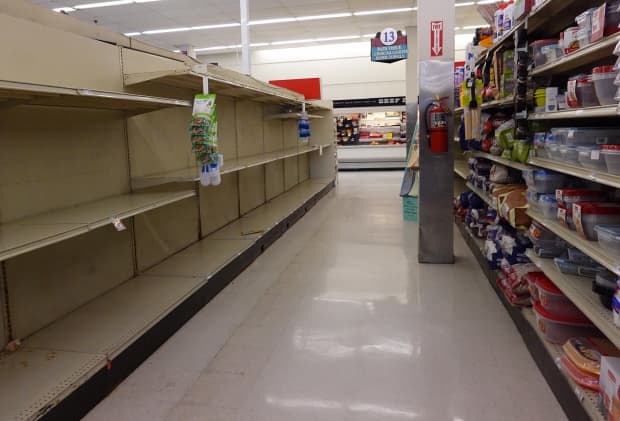This post was originally published on this site

In this recession, one industry or one product may be booming while another is caught in a severe slump.
Joe Raedle/Getty Images
“Not A Typical Downturn: Micro-Recessions and Micro-Recoveries”
By Andrew Duguay
Recessions usually have a generalized effect on the economy, even while there may be concentrations of impact. Take the Great Recession of 2008 as an example. A financial mechanism, the subprime mortgage crisis, served as the catalyst that sank the stock market, but it ultimately went on to affect the economy at large. Most companies experienced losses or limited opportunities. But that’s not what’s happening now. This is not your typical downturn.
Micro-Recessions and Micro-Recoveries
When COVID-19 precipitated the economic shutdown, there was an initial shock, attended by substantial uncertainty. Many were biding their time until the pandemic subsided, while the government responded with a historic stimulus, extended unemployment benefits and the Paycheck Protection Program. But as more time passed, a couple of things became clear: A V-shaped recovery was unlikely and different industries had widely divergent experiences of the pandemic.
Some industries, forced to a standstill by government mandate, foundered while others, capitalizing on emerging opportunities and changing consumer habits, flourished.
The effect of the downturn has been even more granular. We’ve seen fluctuations not just in specific industries, but in specific categories within those industries. Such fluctuations have often been fleeting, with categories within industries oscillating back and forth, month to month, from positive to negative and back.
In short, we’re seeing a slew of micro-recessions and micro-recoveries. We’ve zeroed in on an industry that is uniquely representative of this new phenomenon.
Food and Beverage: Hot and Cold
Note that we’re defining food and beverage here as food items sold by grocery stores, restaurants and convenience stores, so it is an omnichannel industry. There are some stark examples here because some channels have almost disappeared while others, such as groceries, have bloomed, discovering new streams of revenue, with grocery delivery skyrocketing, for example.
Looking at over a dozen indicators, including food prices, industrial production of food, and consumer spending plans on groceries over the next six months, we saw that the industry as a whole only showed 31% of indicators in a positive upward direction in April. That’s to be expected, as this represented the initial indicators following the shock of the coronavirus pandemic.
As you might expect, the overall direction of these indicators trended increasingly upward over the course of the next two months, with May showing a 44% upward trend and June showing an 80% positive directional trend.
The industry took a step backward when July showed only a 44% upward trend of indicators. This could be a function of the regional resurgence of coronavirus cases across the United States, but it is at least partly reflective of the fragility of consumer sentiment in this environment.
Let’s take a look at one of the leading indicators, The Consumer Staples ETF XLP, +1.24% to get a sense of the seesaw quality of indicators in this environment. This basket of consumer staples companies showed an upward directional trend in April, even while many other indicators were exhibiting downward pressure. In May it was negative, then positive in June, and finally negative in July.
Related: These companies have been hit hard as coronavirus causes earnings to plunge
The beverage industry exhibited negative indicators across the board in April and May, but, subsequently, the only data available in June—beverage prices—showed an upward directional trend. As an example of the volatility within beverage, consider the recent earnings reports of two of the largest companies in the industry: Coca-Cola KO, +0.84% and Pepsi PEP, +0.56%. Coca-Cola reported a sales drop of 28%, while Pepsi registered a comparatively modest 3% fall.
Coke’s sales to restaurants and other vendors were substantially hampered by the pandemic, accounting for the company’s significant losses, whereas a large increase in snacks business, buoyed by a rise in grocery shopping and eating at home, offset some of Pepsi’s declining sales.
This is but one example of how different categories within the same industry distinctly impacted two direct competitors with a similar product offering.
Meanwhile, consumer spending plans on groceries over the next six months have remained steadily positive throughout the entire crisis. In other words, category indicators in food and beverage have been all over the map.
No One Indicator
There are other examples of industries showing an abundance of directional variability among category indicators, but they all point to the same general takeaway: There is no linear trend of recovery. This reality may become even more erratic as the extended unemployment benefits lapse and as new coronavirus hot spots surface.
The days of relying heavily on one important indicator are over. Businesses must be vigilant, tracking indicators across multiple categories within their industry, heeding any directional changes that could signal their micro-recession or micro-recovery.

